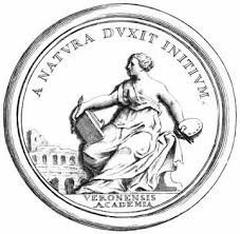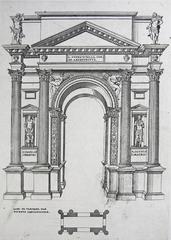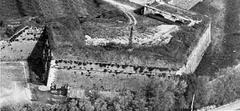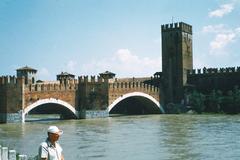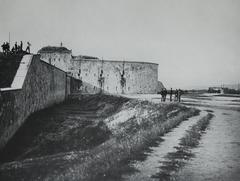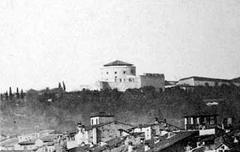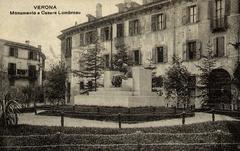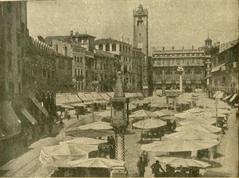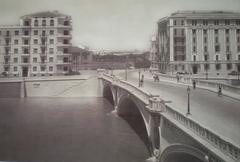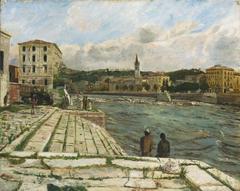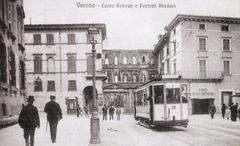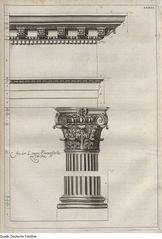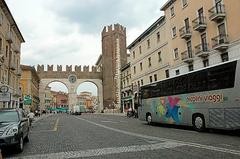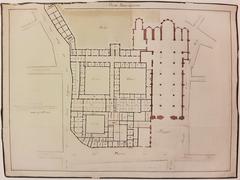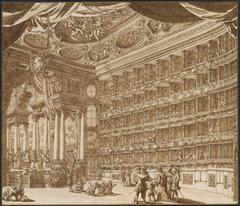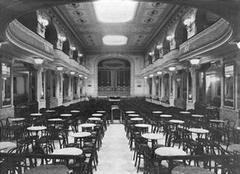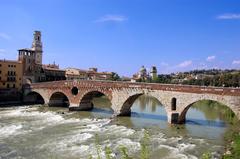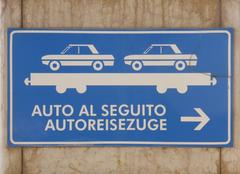Visiting the Monument to Daniele Comboni in Verona, Italy: Tickets, Hours, and Tips
Date: 14/06/2025
Introduction
The Monument to Daniele Comboni in Verona stands as a powerful symbol of humanitarianism, spiritual dedication, and intercultural dialogue. Located in the heart of this historic city, the monument pays tribute to Saint Daniele Comboni (1831–1881), a visionary Italian missionary celebrated for his pioneering work in Africa and for founding the Comboni Missionaries and Missionary Sisters. This comprehensive guide provides detailed information about the monument’s artistic features, historical context, visitor logistics, accessibility, and practical travel tips, ensuring a rewarding and meaningful visit for history enthusiasts, pilgrims, and travelers alike (terraemissione.it; veronafedele.it; Visit Verona).
Table of Contents
- About the Monument to Daniele Comboni
- Artistic Features: Sculptural Composition, Symbolism, and Artistic Context
- Historical Background and Legacy of Daniele Comboni
- Significance and Contemporary Relevance
- Visiting Hours and Ticket Information
- Accessibility and Facilities
- Best Times to Visit and Photography Tips
- Guided Tours and Special Events
- Nearby Attractions and Thematic Itineraries
- Practical Information: Getting There, Parking, and Services
- Visitor Etiquette and Cultural Sensitivity
- Frequently Asked Questions (FAQ)
- References and Further Reading
About the Monument to Daniele Comboni
Situated in the scenic Piazza Isolo, the Monument to Daniele Comboni is a prominent feature of Verona’s spiritual landscape. It commemorates the city’s connection to the missionary’s life and work and is surrounded by the tranquil Comboni Gardens, which provide a serene setting for reflection. The site is easily accessible and serves as a starting point for exploring Verona’s rich religious and cultural heritage.
Artistic Features
Sculptural Composition and Materials
The monument, crafted primarily from bronze and stone, showcases Daniele Comboni in full ecclesiastical attire, symbolizing his role as a bishop and missionary. The bronze statue rests on a sturdy stone pedestal, blending seamlessly with Verona’s historic architecture. Comboni is depicted with one hand extended in a gesture of blessing and invitation—a reflection of his outreach philosophy and commitment to education and dialogue.
Surrounding the central figure are allegorical bas-reliefs and inscriptions, depicting scenes from Comboni’s missionary journey, his work with African communities, and moments of spiritual inspiration. These elements serve not only as artistic expressions but also as educational touchpoints for visitors (terraemissione.it).
Symbolism and Iconography
The monument’s iconography abounds with symbolic references:
- The extended hand represents outreach and empowerment, echoing Comboni’s motto, “Save Africa with Africa.”
- Inscriptions include key dates and quotations such as “Io muoio, ma la mia opera non morirà” (“I die, but my work will not die”).
- Christian symbols, representations of African flora and fauna, and the Sacred Heart reflect the geographical and spiritual scope of Comboni’s mission (veronafedele.it).
Artistic Context and Influences
The monument exemplifies late 19th and early 20th-century Italian sculpture, marked by realism, expressive detail, and narrative clarity. Its placement in Verona, the birthplace of Comboni’s missionary institutes, reinforces its significance as both a local landmark and a symbol of global humanitarian outreach (focusonafrica.info).
Historical Background and Legacy of Daniele Comboni
Daniele Comboni was born in Limone sul Garda in 1831 and ordained in Verona in 1854. Driven by the motto “Save Africa with Africa,” he focused on empowering local leaders and fostering intercultural dialogue. He established the Comboni Missionaries in 1867 and the Comboni Missionary Sisters in 1872, both headquartered in Verona, which today serve in over 40 countries worldwide. Comboni’s innovative approach to missionary work, prioritizing education and partnership, has left a lasting global legacy (terraemissione.it).
Significance and Contemporary Relevance
The monument stands as a beacon of Verona’s humanitarian and intercultural identity. It serves as a site of remembrance, education, and civic gathering, hosting annual commemorations such as Comboni’s feast day on October 10. The site is also included in educational programs, guided tours, and special events that reinforce Comboni’s enduring impact and the city’s ongoing commitment to social justice and dialogue (veronafedele.it; focusonafrica.info).
Visiting Hours and Ticket Information
- Visiting Hours: The monument is outdoors and accessible 24/7, year-round.
- Admission: Free; no ticket required.
- Guided Tours: Available through local tour operators and on specific commemorative occasions. Check with Visit Verona for current schedules.
Accessibility and Facilities
- Wheelchair Access: The area around Piazza Isolo is flat and paved, offering step-free access.
- Seating: Benches are available in the gardens.
- Restrooms: Public facilities are nearby, especially at the Roman Theatre and Piazza Bra.
- Assistance Animals: Guide dogs are welcome.
- Nearby Parking: Paid parking is available at Parcheggio Piazza Isolo and Parcheggio Centro (Traveling Italian).
The adjacent African Museum is fully accessible and provides further educational context.
Best Times to Visit and Photography Tips
- Seasons: Spring and autumn offer mild weather and fewer crowds; summers can be hot and busier (annaeverywhere.com).
- Times: Early mornings and late afternoons provide optimal lighting for photography and a peaceful atmosphere for reflection.
- Photography: The monument is especially photogenic during golden hour and can be previewed via Wikimedia Commons.
Guided Tours and Special Events
- Guided Itineraries: The monument features in many religious and historical walking tours, often paired with visits to nearby churches and the African Museum.
- Commemorative Events: Special events are held on Daniele Comboni’s feast day (October 10) and anniversaries of the Comboni institutes’ founding, with guided visits and community gatherings (Comboniane).
Nearby Attractions and Thematic Itineraries
The monument’s central location allows for easy integration into Verona’s broader historical and spiritual landscape:
- African Museum: Offers exhibits on Comboni’s work and African cultures (Visit Verona – African Museum).
- Roman Theatre and Archaeological Museum: Explore Verona’s Roman roots.
- Santa Maria in Organo & Sant’Anastasia: Renowned for their art and architecture (Mapcarta).
- Verona Cathedral, Basilica di San Zeno Maggiore, San Fermo: Key stops on religious itineraries (The World Was Here First).
Suggested Itinerary:
- Morning: Start at Verona Cathedral, then visit the Monument to Daniele Comboni.
- Midday: Explore the African Museum.
- Afternoon: Continue to Basilica di San Zeno and Sant’Anastasia.
For more thematic itineraries, consult Visit Verona or the Verona Minor Hierusalem initiative for curated routes.
Practical Information: Getting There and Services
- Location: Piazza Isolo, Verona, Italy (Mapcarta)
- By Foot: 15–20 minutes from Piazza Bra/Arena di Verona.
- By Public Transport: ATV bus lines 11, 12, and 13 serve the area (ATV Verona).
- By Car: ZTL restrictions apply; park at designated lots (Traveling Italian).
- Facilities: Cafés, restaurants, and tourist information are within walking distance.
Visitor Etiquette and Cultural Sensitivity
- Approach the site with respect; avoid climbing or leaving litter.
- During events or commemorations, observe moments of silence or participate as appropriate.
- The monument embodies Daniele Comboni’s inclusive vision; all visitors are welcome, regardless of background (Comboni Missionaries).
Frequently Asked Questions (FAQ)
Q: Is there an entry fee or ticket required?
A: No, the monument and gardens are free and open at all times.
Q: Are guided tours available?
A: Yes, through local operators and during special events (Visit Verona).
Q: Is the area wheelchair accessible?
A: Yes, the monument and surroundings are fully accessible.
Q: What are the best times to visit?
A: Early mornings and late afternoons in spring or autumn.
Q: Are there nearby historical sites to visit?
A: Yes, the African Museum, Roman Theatre, and several historic churches are close by.
References and Further Reading
- Terra Emissione – Missionari Comboniani
- Verona Fedele – I primi 150 anni dei missionari comboniani
- Visit Verona – Plan Your Trip
- Catholic Ireland – St Daniel Comboni
- Focus on Africa – 150 Years Since Daniel Comboni Founded the Institute of the Comboni Missionary Sisters
- Traveling Italian – Verona Travel Guide
- Mapcarta – Monument to Daniele Comboni
- Wikimedia Commons – Monument to Daniele Comboni
- Comboni Missionaries
- Comboni Missionary Sisters
Plan Your Visit
The Monument to Daniele Comboni is more than a historical landmark; it is a living testament to a legacy of compassion, education, and intercultural engagement. Its central location, accessibility, and integration with Verona’s spiritual and cultural sites make it an essential stop for any visitor. Enhance your experience by exploring nearby attractions, participating in guided tours, and utilizing the Audiala app for detailed itineraries and visitor information.
For the latest updates on events, accessibility, and services, consult the official Visit Verona website or inquire at the tourist office.
Call to Action
Make the most of your journey by planning a visit to the Monument to Daniele Comboni in Verona. Download the Audiala app for guided tours, explore related articles on Verona’s religious and cultural heritage, and follow us on social media for insider tips and the latest updates. Immerse yourself in the enduring spirit of faith, history, and global outreach that defines Verona.
